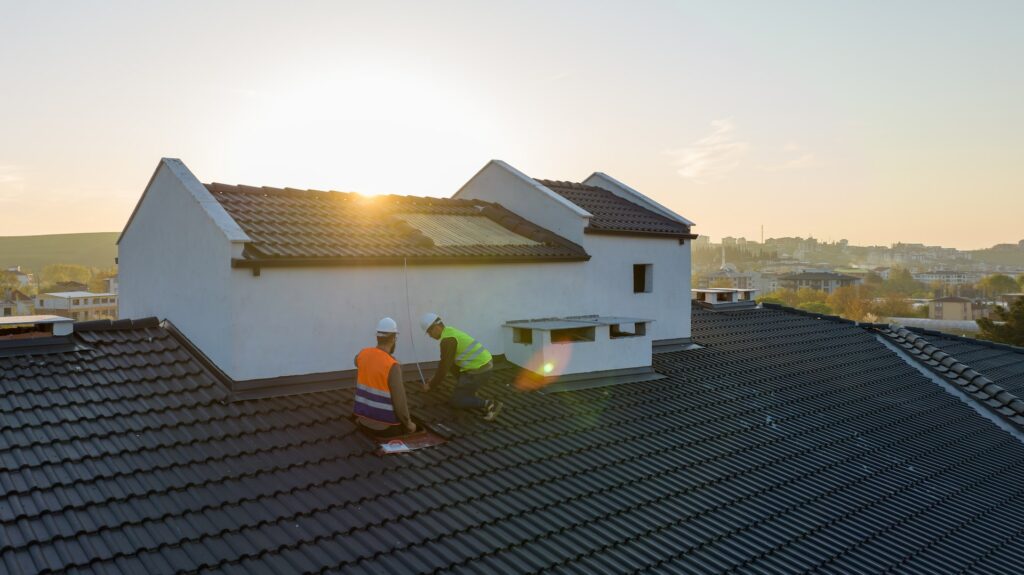When Mother Nature decides to flex her muscles, we’re often left picking up the pieces. From fierce winds tearing off roofs to torrential rains seeping into foundations, storm damage can leave your home in a state of disarray.
But have no fear, BMR Homes is here with the ultimate storm restoration guide. We’re not just about helping you put your home back together; we’re about giving you the confidence and know-how to handle whatever storm damage comes your way. This guide is chock-full of tips and advice directly from our seasoned team of restoration experts, who have seen it all and fixed it all.
So, let’s roll up our sleeves and get your home back to its former glory, shall we?
Common Types of Storm Damage and What to Look For
Different storm events can cause varying types of damage to your home and property. Understanding these potential damages is essential for properly addressing your storm restoration needs:
- Wind damage: High winds can cause structural damage to your roof, siding, and windows, as well as uproot trees and damage other outdoor structures, such as sheds and fences.
- Water damage: Heavy rainfall and flooding can lead to water intrusion in your home, potentially resulting in waterlogged flooring, damaged drywall, and even mold growth if not promptly addressed.
- Hail damage: Hailstones can cause significant damage to your roof, siding, windows, and outdoor structures, leading to costly repairs and replacements if not promptly resolved.
- Lightning damage: A lightning strike can cause electrical fires, damage home appliances, and, in extreme cases, even compromise the structural integrity of your home.
By being aware of these potential damages, you’ll be better equipped to assess your property and identify areas that require immediate attention and restoration efforts.
Swift Action After a Storm
Taking timely action following a storm is critical to minimize further damage to your home, initiate the restoration process, and prevent potential health hazards:
- Secure your property: Immediately after the storm, if it is safe to do so, inspect your property for damages and take steps to secure your home, such as covering damaged roofs with tarps and boarding up broken windows.
- Document the damages: Capture photos and videos of the damages to your property, which will serve as essential documentation for your insurance claim and facilitate a smoother process with your insurance provider.
- Contact a storm restoration professional: Reach out to a reputable storm restoration expert such as BMR Homes to assess the damage, provide an estimate, and begin the restoration process as soon as possible.
- Initiate damage mitigation efforts: With the guidance of your storm restoration professional, take appropriate steps to mitigate further damage, such as water removal, drying, and temporary repairs until the restoration process is complete.
Working with Your Insurance Company
Navigating the insurance claims process can be challenging, but these steps will help ensure a smoother experience:
- Understand your coverage: Review your insurance policy to understand your coverage for storm damage and what your responsibilities entail throughout the claims process.
- Report the damages: Contact your insurance provider promptly to report the storm damage and initiate the claims process.
- Submit documentation: Provide your insurance company with the necessary documentation, including photographs, videos, and a written inventory of damaged items, to support your claim.
- Coordinate with your storm restoration expert: Work closely with the restoration professionals at BMR Homes, who can collaborate with your insurance provider to ensure a seamless process and maximize your insurance benefits.
Choosing a Trustworthy Storm Restoration Company
Selecting the right storm restoration company is crucial for a successful recovery. Consider the following factors when making your decision:
- Expertise and experience: Seek a company with a strong background and solid expertise in handling storm restoration projects of varying types and complexities.
- Certifications and licenses: Confirm that the company holds the necessary certifications and licenses, such as the Institute of Inspection Cleaning and Restoration Certification (IICRC), to ensure they follow industry best practices.
- Referrals and reviews: Ask for recommendations from friends, family, or online sources to ascertain the credibility and reputation of the storm restoration company you are considering.
- Personalized approach: Choose a company like BMR Homes that offers tailored services to address your unique needs and preferences, ensuring your satisfaction and peace of mind throughout the restoration process.
How BMR Homes Can Help Revive Your Home After a Storm
Dealing with storm damage can be overwhelming, but with the support and expertise of a trusted storm restoration company like BMR Homes, the recovery process becomes manageable and efficient. Armed with the knowledge and advice provided in this ultimate storm restoration guide, you can confidently navigate the challenging aftermath of a storm, rebuild your home, and protect your family’s well-being and future.
Trust in the unmatched expertise, personalized service, and unwavering commitment of BMR Homes to help you through the storm restoration process. Contact us today to discuss your storm restoration needs, and let our dedicated team lead you on the path to a fully restored home and a brighter tomorrow.

